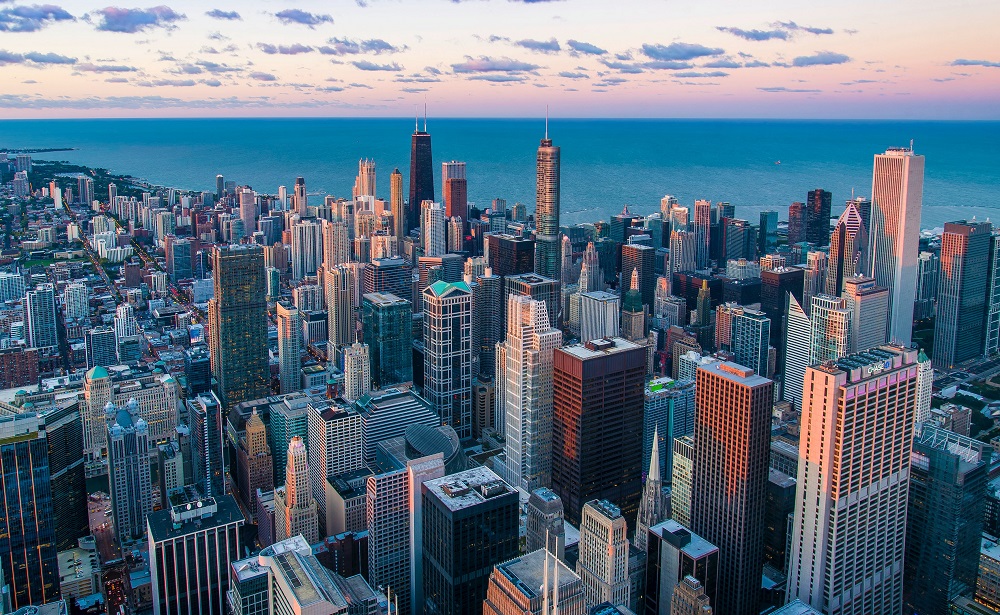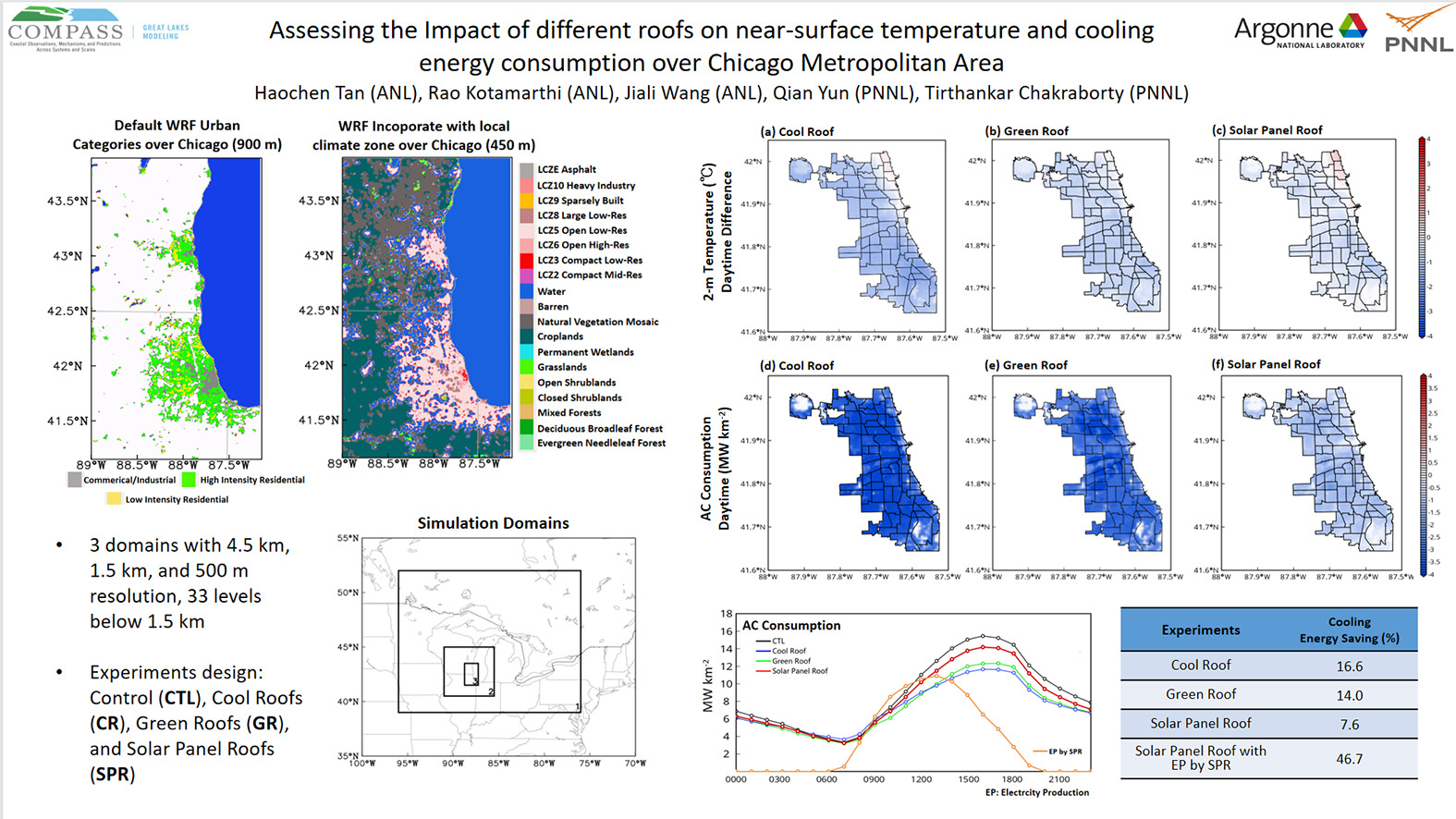What a roof’s material can do to lower energy demand
roof

Concrete sidewalks, black asphalt streets, traffic, brick and steel buildings. These common city elements can retain heat and increase temperatures in a phenomenon called the urban heat island effect.
With increasingly warming temperatures during the summer months, urban cities like Chicago need to arm decision makers and communities with information about strategies to help keep their residents cool. One strategy involves something all buildings already have: a roof. Certain roofing materials can help cool the surrounding outside air and decrease the need for air conditioning (AC).
To help understand how climate is affecting urban communities, researchers at the U.S. Department of Energy’s (DOE) Argonne National Laboratory examined 1 three different types of roofing strategies and their impact on near-surface temperature and cooling energy demand through regional modeling in the Chicago metropolitan area.
The scientists chose to run their model during a heatwave event — where temperatures cross the 95th percentile observed in a city for three consecutive days — as opposed to average summer temperatures so that potential benefits could be maximized.
The team ran a regional climate model simulating the Chicago metro area and three types of roofs: cool (painted a heat-reflecting white), green (vegetation) and solar panels.

They found that the three types of roofs reduced the near-surface temperature and AC consumption demand during daytime hours when air temperature is the highest. Cool roofs reduced the near-surface temperature by 1.5 degrees Celsius, followed by 1.2 degrees for green roofs and 0.6 degrees for solar panel roofs across the Chicago area.
Because all the roofing strategies offer cooling effects, they reduce AC consumption. Cool roofs reduced AC energy consumption the most, followed by green roofs and solar panel roofs. Energy demand was shown to be reduced by 16.6%, 14.0%, and 7.6%, when cool roofs, green roofs and solar panel roofs are deployed, respectively.
Overall, the large-scale deployment of cool roofs showed the best potential for cooling effects and cooling energy saving. They cost less than the other two technologies, and they do not require additional water. However, they are not helpful in managing stormwater loads as green roofs have the potential to do. Stakeholders can use results of the study to inform sustainable development approaches, lower summertime cooling energy demand, and help minimize greenhouse gas emissions in the long term.
References
- Haochen Tan, Rao Kotamarthi, Jiali Wang, Yun Qian, T.C. Chakraborty (2023) Impact of different roofing mitigation strategies on near-surface temperature and energy consumption over the Chicago metropolitan area during a heatwave event Science of The Total Environment doi: 10.1016/j.scitotenv.2022.160508. ↩